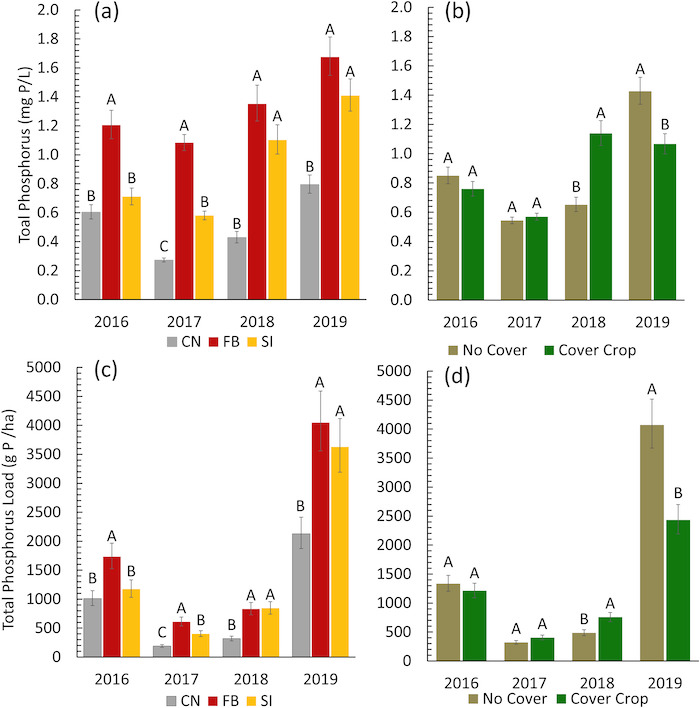Cover crops reduce sediment loss and total phosphorus (P) loss from no-till corn and soybean fields, according to a study published in the Journal of Environmental Management. However, researchers say banding P, rather than broadcasting it, is still a better strategy to reduce potential P loss.
This study examined the impacts of P fertilizer management (no P, fall broadcast P and spring injected P) and cover crop use on annual concentrations and loads of sediment, total P and dissolved reactive P (DRP) in edge-of-field runoff from a no-till corn-soybean rotation in the central Great Plains from September 2015 through September 2019.
Highlights of the study:
- Cover crops reduced sediment loss and total phosphorus loss when sediment loss was high.
- Cover crops increased dissolved reactive phosphorus loss in years with little sediment loss.
- Subsurface placement of phosphorus fertilizer is a best management practice to reduce phosphorus loss.
- Phosphorus fertilizer management is key to protect water quality even with cover crop systems.
- Cover crops are a site-specific management tool to reduce sediment and total phosphorus loss.

Phosphorus fertilizer management practice by harvest year interaction (a, c) and cover crop by harvest year interaction (b, d) on flow-weighted annual average total phosphorus concentration in surface runoff and total phosphorus load in runoff. Abbreviations include: control (CN), fall broadcast (FB), and spring injected (SI). Letters represent between treatments within indicated harvest year at p < 0.05 and error bars represent the standard error of the mean.
Overall, the study found that addition of a cover crop did not negate the potential negative impacts of broadcast P fertilizer application, suggesting that, although broadcast fertilizer application may offer producers a variety of advantages over sub-surface application, placing P fertilizer below the soil surface is a better option for reducing potential P loss compared to broadcast application with a cover crop.
To see the full results and read the report, visit this link.






Post a comment
Report Abusive Comment